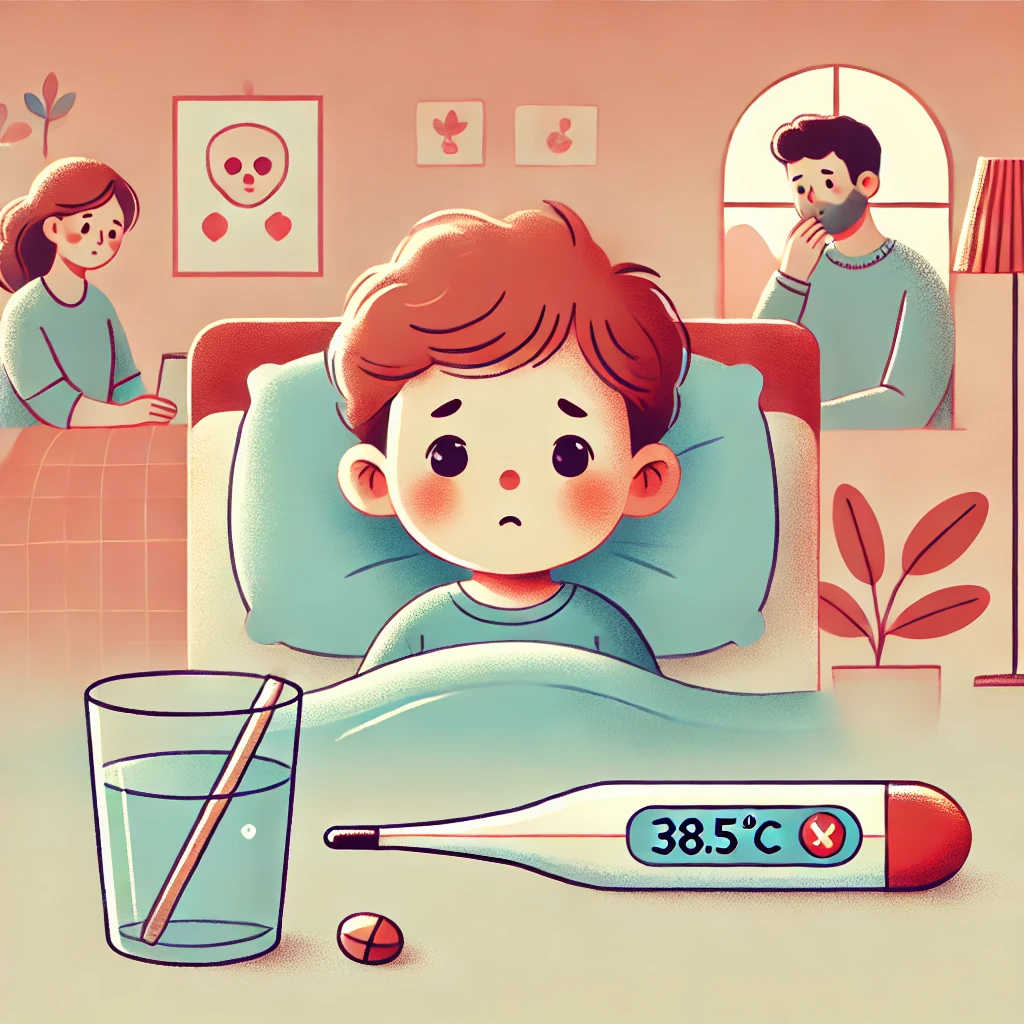Fever
Definition
Fever is an elevated body temperature, usually resulting from an illness or infection.
Parts of Speech
- Noun
IPA Pronunciation and Respelling
American English
- IPA Pronunciation: /ˈfivər/
- Respelling: FEE-ver (with "FEE" as in "see" and "ver" as in "her")
British English
- IPA Pronunciation: /ˈfiːvə/
- Respelling: FEE-vuh (with "FEE" as in "see" and "vuh" as in "sofa")
In both dialects, "fever" places the primary stress on the first syllable, "FEE." The pronunciation is similar across both American and British English, with "FEE-ver" in American English and "FEE-vuh" in British English.
Etymology
he word "fever" originates from the Latin word "febris," meaning "fever" or "heat." It was adopted into Old English as "fefer," and later evolved into "fever" in Middle English. The term has been consistently used to describe elevated body temperature associated with illness.
Derivatives
- Febrile (adjective)
- Feverish (adjective)
- Fevered (adjective)
- Feverishly (adverb)
- Afevered (adjective, less common, old usage)
Synonyms
- Pyrexia
- High temperature
- Elevated temperature
Antonyms
- Normothermia
- Hypothermia
- none
Usage
"Fever" is commonly used in medical and everyday contexts to describe the condition of having a high body temperature. It is often associated with symptoms like sweating, chills, headache, and muscle aches. Fever is a common response to infections, such as those caused by viruses or bacteria, and can also result from inflammation, heat exhaustion, or other medical conditions.
Related Terms
- Thermometer: A device used to measure body temperature.
- Infection: The invasion and multiplication of microorganisms such as bacteria, viruses, and parasites in the body.
- Antipyretic: A drug or treatment used to reduce fever.
Detailed Definition
Noun
- Medical Condition: Fever is a temporary increase in the body's temperature, often due to an illness. Normal body temperature ranges between 36.1°C and 37.2°C (97°F and 99°F), and a temperature above this range is generally considered a fever.
- Example: The child had a fever of 38.5°C (101.3°F), indicating a possible infection.
- Symptom of Illness: Fever is a common symptom of many infections and diseases, serving as an indicator that the body's immune system is fighting off a pathogen.
- Example: A persistent fever could be a sign of a serious underlying condition and may require medical attention.
- Feverish Excitement or Energy: The term "fever" can also be used metaphorically to describe a state of intense excitement or agitation.
- Example: The crowd was in a fever of anticipation before the concert began.
fever



🇨🇳 Mandarin
- 发烧 (fāshāo)
- IPA: [fá.ʂáu]
- Respell: fah-shao
- 热病 (rèbìng)
- IPA: [ɻɤ̀.pìŋ]
- Respell: ruh-bing
🇮🇳 Hindi
- बुखार (bukhār)
- IPA: [bʊkʰaːr]
- Respell: bu-khaar
- ताप (tāp)
- IPA: [taːp]
- Respell: taap
🇪🇸 Spanish
- Fiebre
- IPA: ['fjeβɾe]
- Respell: fee-eh-vreh
- Calentura
- IPA: [kalenˈtuɾa]
- Respell: ka-len-too-ra
🇫🇷 French
- Fièvre
- IPA: [fjɛvʁ]
- Respell: fee-evr
- Température
- IPA: [tɑ̃peʁatyʁ]
- Respell: tan-pe-ra-tyr
🇸🇦 Modern Standard Arabic
- حُمّى (ḥummā)
- IPA: [ˈħʊmmæː]
- Respell: hum-maa
- الحرارة (al-ḥarārah)
- IPA: [alħaˈraːra]
- Respell: al-ha-raa-rah
🇧🇩 Bengali
- জ্বর (jôr)
- IPA: [d͡ʒɔr]
- Respell: jor
- তাপ (tap)
- IPA: [tap]
- Respell: tap
🇷🇺 Russian
- Лихорадка (Likhоradka)
- IPA: [lʲɪxɐˈradkə]
- Respell: lee-kho-rad-ka
- Горячка (Goryachka)
- IPA: [ɡɐˈrʲæt͡ɕkə]
- Respell: go-ryach-ka
🇵🇹 Portuguese
- Febre
- IPA: ['fɛbɾɨ]
- Respell: feh-breh
- Febra
- IPA: ['fɛbɾɐ]
- Respell: feh-bra
🇮🇩 Indonesian
- Demam
- IPA: [dɛˈmam]
- Respell: de-mam
- Panas
- IPA: ['panas]
- Respell: pa-nas
🇩🇪 German
- Fieber
- IPA: ['fiːbɐ]
- Respell: fee-ber
- Temperatur
- IPA: [tɛmpɐraˈtuːɐ̯]
- Respell: tem-pe-ra-toor
🇯🇵 Japanese
- 熱 (netsu)
- IPA: [netsɯ]
- Respell: ne-tsu
- 発熱 (hatsunetsu)
- IPA: [hatsɯnetsɯ]
- Respell: hat-su-ne-tsu
🇻🇳 Vietnamese
- Sốt
- IPA: [sot]
- Respell: sot
- Cơn sốt
- IPA: [kɔn sot]
- Respell: kon sot
🇰🇷 Korean
- 열 (yeol)
- IPA: [jʌl]
- Respell: yeol
- 발열 (baryeol)
- IPA: [ba.ɾjʌl]
- Respell: bar-yeol
🇹🇷 Turkish
- Ateş
- IPA: [aˈteʃ]
- Respell: ah-tesh
- Humma
- IPA: ['humːa]
- Respell: hoom-ma
🇵🇰 Urdu
- بخار (bukhār)
- IPA: [bʊkʰaːr]
- Respell: bu-khaar
- تپ (tap)
- IPA: [təp]
- Respell: tap





